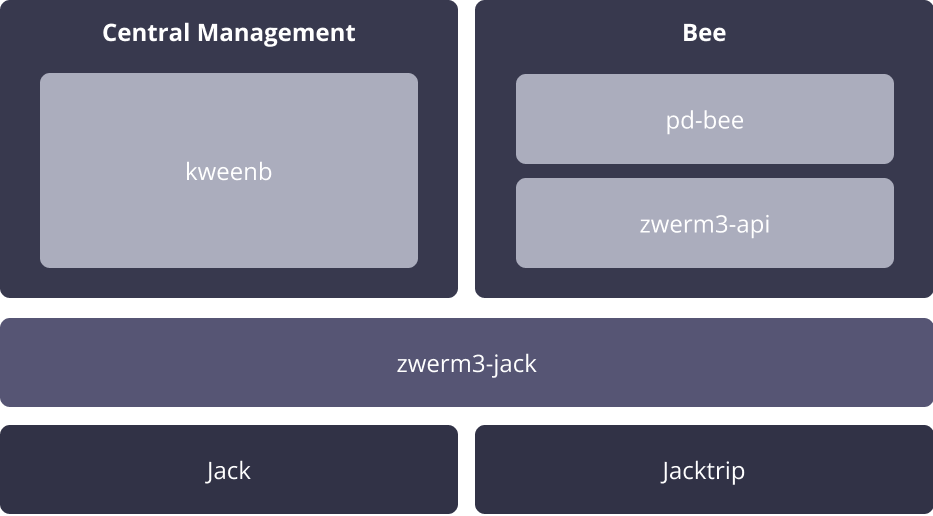Architecture
Overview
The architecture of Zwerm3 is evolving iteratively, blending practical insights with theoretical decisions.
Core Components

The codebase is built on top of Jack Audio Connection Kit and Jacktrip, which are essential for initiating and controlling audio streams. We've developed zwerm3-jack, a Node.js package that abstracts the complexity of Jack and Jacktrip, making it easy to integrate into any project.
On top of zwerm3-jack, we built two core packages:
zwerm3-api: a daemon running on each speaker node (we also call the node a "bee") to handle local processes.kweenb: a centralized management system that orchestrates the swarm and manages data such as positioning.
Each bee runs a Pure Data patch, pd-bee, responsible for receiving audio streams over the network and acts as a file player for triggering. Parameters like volume and frequency are adjustable before the audio is sent to the DAC.
Streaming Audio

To start streaming, you need a sound interface—this can be either a virtual or physical device. Tested virtual devices include Rogue Amoeba Loopback and the open source Blackhole.
Once you have the desired number of audio channels available, the bee with ID 1 will be sent to channel 1, the bee with ID 2 to channel 2, and so on. You can configure the number of speakers in kweenb and send out an audio stream in peer-to-peer mode or hub mode (more details in the kweenb section).
In the background, kweenb initializes Jack and Jacktrip with your specified settings (through zwerm3-jack). Jack handles the connections from your audio device to Jacktrip. Jacktrip is responsible for transmitting the audio over the network using UDP. When a bee receives an audio signal, it is captured via Jacktrip, routed to Jack, then passed to Pure Data before being sent to the bee's DAC for audio signal conversion.
Triggering Audio
Triggering is straightforward: upload audio files to a bee using kweenb, then trigger them via OSC. The signal is received by pd-bee and can be controlled through kweenb.
Technical stack
We use the following technical stack: